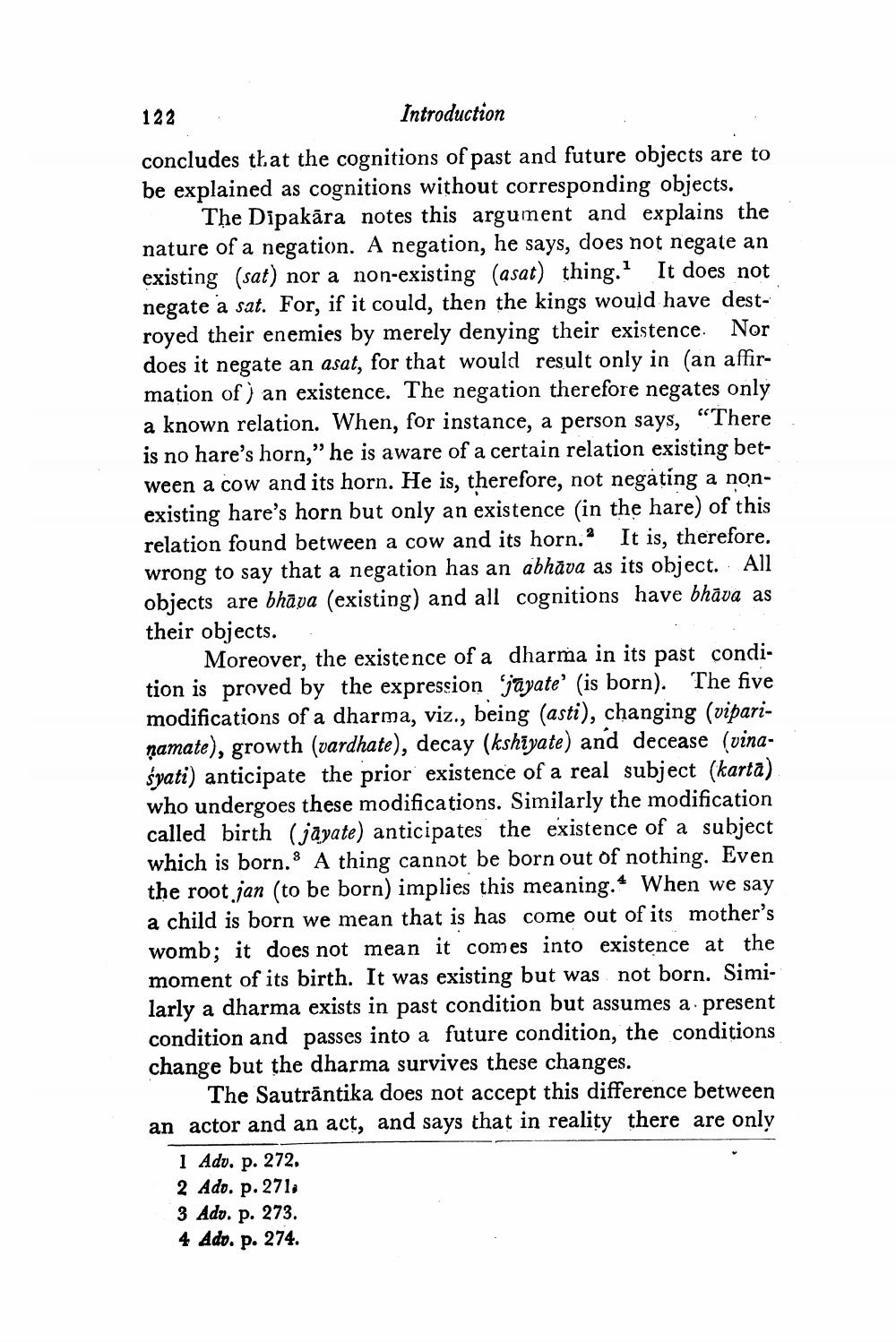________________ 122 Introduction concludes that the cognitions of past and future objects are to be explained as cognitions without corresponding objects. The Dipakara notes this argument and explains the nature of a negation. A negation, he says, does not negate an existing (sat) nor a non-existing (asat) thing. It does not negate a sat. For, if it could, then the kings would have destroyed their enemies by merely denying their existence. Nor does it negate an asat, for that would result only in (an affirmation of) an existence. The negation therefore negates only a known relation. When, for instance, a person says, "There is no hare's horn," he is aware of a certain relation existing between a cow and its horn. He is, therefore, not negating a nonexisting hare's horn but only an existence in the hare) of this relation found between a cow and its horn. It is, therefore. wrong to say that a negation has an abhava as its object. All objects are bhava (existing) and all cognitions have bhava as their objects. . Moreover, the existence of a dharma in its past condition is proved by the expression jayate' (is born). The five modifications of a dharma, viz., being (asti), changing (viparinamate), growth (vardhate), decay (kshiyate) and decease (vinasyati) anticipate the prior existence of a real subject (karta) who undergoes these modifications. Similarly the modification called birth (jayate) anticipates the existence of a subject which is born. A thing cannot be born out of nothing. Even the root jan (to be born) implies this meaning. * When we say a child is born we mean that is has come out of its mother's womb; it does not mean it comes into existence at the moment of its birth. It was existing but was not born. Similarly a dharma exists in past condition but assumes a present condition and passes into a future condition, the conditions change but the dharma survives these changes. The Sautrantika does not accept this difference between an actor and an act, and says that in reality there are only I Adv. p. 272. 2 Ado. p. 271, 3 Ado. p. 273. 4 Ado. p. 274.




